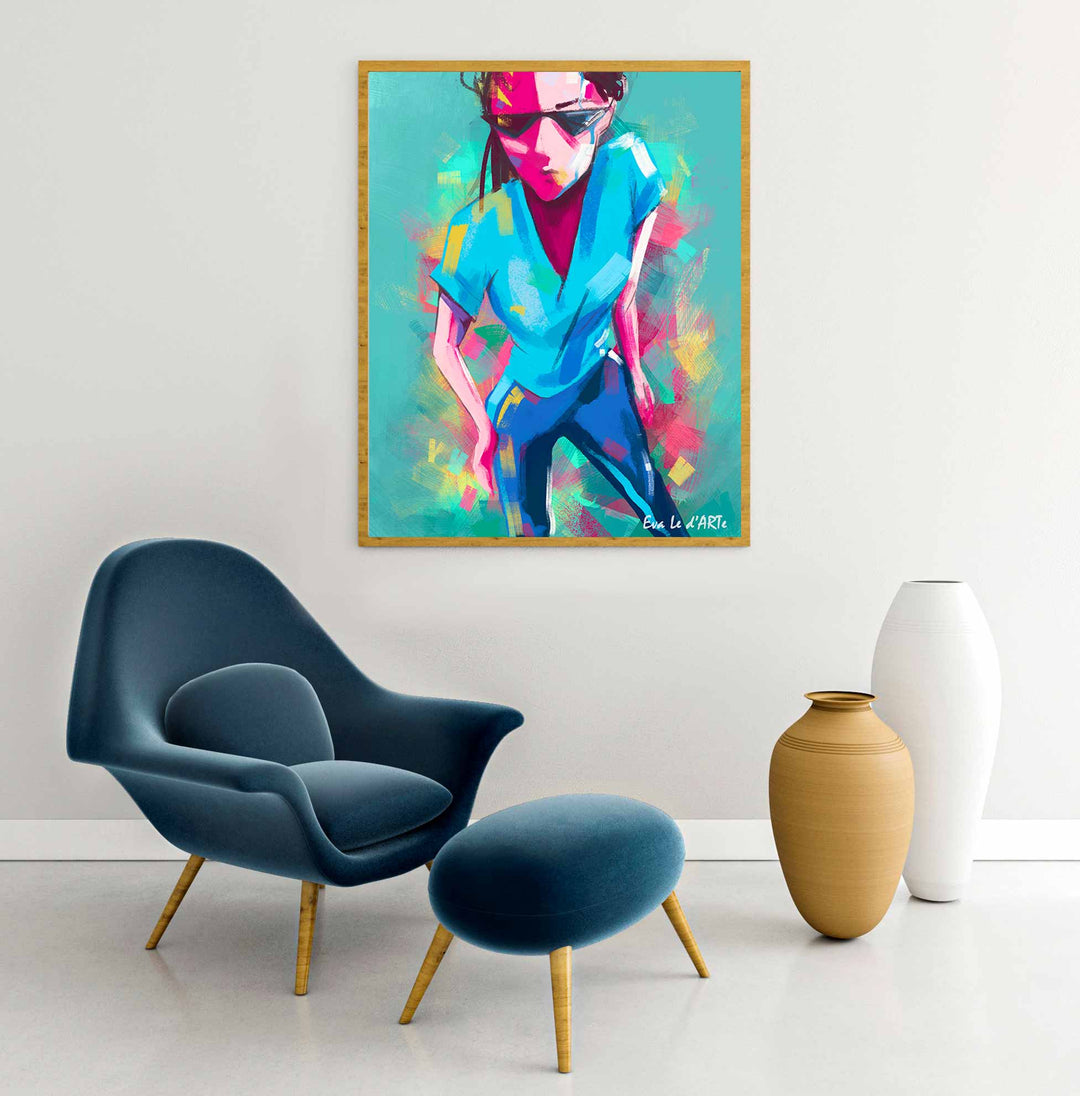Mastering the Art of Metaphorical Oil Paint: Necessary Tips and Techniques for Aspiring Artists
Metaphorical oil painting stands for a complex crossway of strategy and interpretation, requiring a complete comprehension of human makeup, composition, and color concept. An exploration of color consistency and texture methods can dramatically enhance the aesthetic impact of their work.

Recognizing Human Anatomy
Comprehending human composition is basic for any kind of musician aspiring to master figurative oil painting. An extensive grasp of the human type allows musicians to produce natural depictions that reverberate with visitors. Expertise of physiological frameworks, such as bones, joints, and muscles, provides important insight into how the body moves and poses.
Musicians need to acquaint themselves with the percentages of the human number, including the connection between various body components and exactly how these proportions vary across ages and sexes. This recognition permits for precise scaling and point of view in their work. Additionally, recognizing the underlying musculature boosts the capability to illustrate motion and tension in a number, leading to a much more dynamic and compelling make-up.
Researching composition also helps in recognizing refined subtleties in stance and expression, which are important for communicating feeling and narrative within a paint. Resources such as physiological books, life illustration sessions, and on the internet tutorials can be indispensable tools for musicians seeking to grow their anatomical expertise. Eventually, mastering human makeup not only boosts technical skill however also enhances an artist's imaginative vision, enabling them to bring their metaphorical oil paintings to life with authenticity and deepness.
Significance of Make-up

Key principles of structure consist of equilibrium, unity, and focal factors. Achieving balance guarantees that no single aspect bewilders the others, while unity develops a sense of harmony throughout the piece. Prime focus accentuate considerable facets of the artwork, permitting visitors to engage with the narrative or style extra deeply.
In addition, making use of leading lines and the regulation of thirds can dramatically boost make-up. Leading lines naturally assist the visitor's stare through the paint, while the regulation of thirds gives a structure for putting crucial elements in a visually appealing fashion. By grasping structure, aspiring musicians can boost their metaphorical oil paintings, changing them right into compelling visual tales that reverberate with their audience.
Learning Shade Theory
Shade concept functions as a fundamental facet of figurative oil painting that enhances the principles of composition. Recognizing the shade wheel, that includes key, additional, and tertiary colors, is important for developing unified palettes and reliable visual narratives.
Secret concepts such as hue, worth, and saturation play a vital role in establishing the mood and influence of a painting. Musicians ought to discover trendy and warm shades to evoke certain emotions; warm shades typically share energy and interest, while awesome shades can impart calmness and peace.
The relationship in between corresponding colors-- those contrary each various other on the color wheel-- can produce striking contrasts and vibrant structures. When compared, these shades improve each various other's vibrancy, drawing the customer's eye and adding depth to the art work.
In addition, understanding analogous colors enables musicians to achieve a sense of unity and coherence. By picking colors that are nearby on the wheel, one can preserve a well balanced atmosphere throughout the piece.
Eventually, understanding color theory gears up aiming musicians with the tools required to control shade purposefully, enhancing their ability to communicate emotion and story via metaphorical oil paint. figurative oil painting.
Techniques for Texture
A range of methods can properly develop texture in figurative oil painting, adding depth and dimension to the artwork. One fundamental method is the use of impasto, where thick layers of paint are related to the canvas, permitting a three-dimensional high quality. This strategy boosts light communication, developing vibrant aesthetic interest.
Another approach is scumbling, which entails this content using a slim layer of lighter paint over a dried out darker layer. This strategy permits the underlying shade to reveal with, leading to a soft, textured impact that can evoke a sense of atmosphere or age. Dry cleaning is additionally vital; utilizing a dry brush with very little paint, artists can create fragile appearances and great lines, excellent for recording the nuances of skin or fabric.
Additionally, palette knives can be employed to apply or scratch paint, creating special patterns and appearances. Try out various devices and products, such as sponges or rags, can further enrich the textural top quality of a paint. Eventually, grasping these methods requires practice and experimentation, enabling artists to uncover the diverse responsive top qualities that can raise their figurative jobs.
Developing Your One-of-a-kind Style
An artist's special style is often the end result of personal experiences, affects, and techniques sharpened in time. Creating this uniqueness in metaphorical oil painting calls for a conscious initiative to explore both your internal self and the broader creative landscape. Begin by mirroring on the styles and topics that resonate with you mentally; your interest will instill credibility into your job.
Research various styles and activities, but as opposed to mimicing, essence components that talk to you - figurative oil painting. Try out various strategies, shade palettes, and compositions, enabling yourself the flexibility to play without the stress of excellence. Maintain a sketchbook or journal to document your thoughts, ideas, and artistic progression; this will work as an important resource for determining persisting concepts and choices
Seek useful comments from peers or advisors, as they can provide understandings that illuminate elements of your job you might ignore. Be individual with yourself; the journey have a peek at this website of establishing a special design is continuous, progressing with each brushstroke and every canvas you run into.

Verdict
Understanding metaphorical oil paint demands a comprehensive grasp of human anatomy, structure, and color theory. Embracing these foundational principles will considerably benefit striving artists on their creative journey.
Figurative oil paint stands for an intricate junction of strategy and analysis, requiring a thorough comprehension of human makeup, make-up, review and shade concept. An exploration of color harmony and structure techniques can substantially enhance the aesthetic impact of their work. By understanding structure, striving musicians can raise their figurative oil paintings, changing them into compelling aesthetic tales that resonate with their audience.
Experiment with various methods, color schemes, and structures, enabling yourself the liberty to play without the pressure of excellence.Grasping figurative oil paint requires an extensive understanding of human composition, composition, and shade theory.